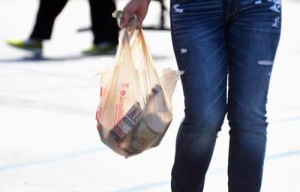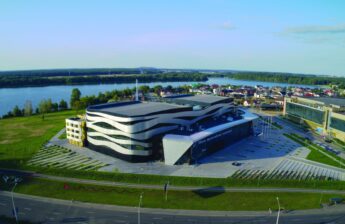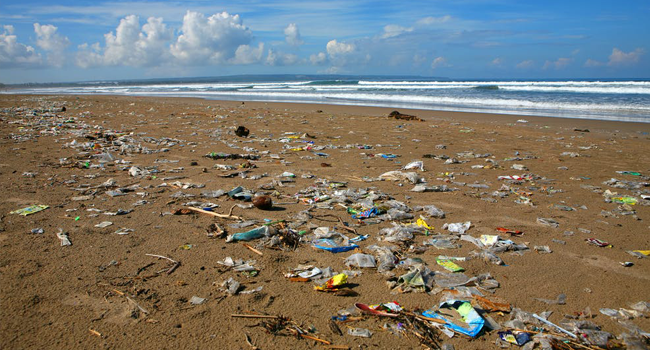In 2010, Adam Minter, Bloomberg’s Shanghai correspondent, visited Wen’an – then the heart of the global scrap plastic trade – undercover. In 2011 the Chinese government introduced new regulations and shut down the scrap plastic trade in this part of the country. The small family businesses closed or scattered across the country. In 2013, according to figures from the Bureau of International Recycling, China imported about 8-9m tonnes of plastics scrap – less than in previous years. BIR estimates that global plastic scrap consumption will climb from 15m tonnes in 2007 to around 45m tonnes by 2015. Here is an extract from Minter’s book about his experience.
It’s a bustling, crowded and incomprehensibly dirty main street, crossed by the occasional stray dog, partly blocked by a broken-down truck, and frequently scarred by black spots where, I’m later told, unrecyclable plastics were burned in the night. Above me, plastic bags are captured by the wind, floating on the breeze. But what I find most striking about Wen’an is this: there’s nothing green. It’s a dead zone.
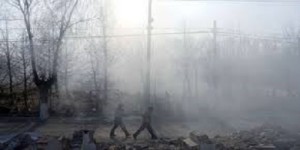
It wasn’t always this way. Twenty-five years ago, Wen’an was bucolic – an agricultural region renowned for its streams, peach trees and simple, rolling landscape. The people who knew it then sigh when they recall the fragrant soil, the fishing and the soft summer nights. Engage a local in conversation and within minutes you’ll hear about how you should’ve come in the old days. This was back before the business of Wen’an was the business of recycling automobile bumpers, plastic bags and bleach containers. Back when the frogs and crickets were so loud they drowned out human conversation, back before the development of the plastics recycling trade plasticized the lungs of men in their 20s.
According to the most recent statistics, provided by the China Plastics Processing Association, in 2006 the country was home to roughly 60,000 small-scale, family-owned workshops devoted to recycling plastic. Of those, 20,000 are concentrate in Wen’an County. In other words: Wen’an County isn’t just the heart of northern China’s scrap plastics industry ; it is the Chinese scrap plastics industry. And because China is the world’s largest scrap plastics importer and processor, it’s fair to say that Wen’an County is at the heart of the global scrap plastics trade.
The precise details of how Wen’an was transformed into a global plastics recycling centre are lost to history. Still, as we chat with the locals, it becomes clear that it was accidental rather than part of a grand plan. “Someone started doing it,” explains one local who has worked in the industry for years. “He made money, so more people did it. The government saw it as a good source of tax revenue and encouraged the industry. It was random.”
After lunch Josh and I are driven out of central Wen’an to visit a plastics recycling factory with two representatives of one of the county’s biggest processors. As we bounce down the road, one of them tells us that most of Wen’an’s plastics businesses are located in around 50 villages that spill across the rural, unconnected county. The small scrapyard behind us belongs to a village. It’s rumoured to manufacture plastic bags from an ugly mix, including industrial-use plastics, which are then passed off as safe for food packaging.
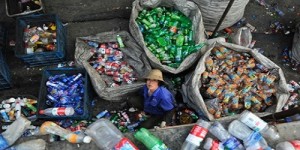
We cross a bridge over an algae-choked river into a tighter, dustier version of the streets of downtown Wen’an. These paths are crowded with groups of half-naked, often barefoot children who race and play among trucks piled with sheets of corrugated plastic boxes, old plastic barrels, and giant dried puddles of plastic to be shovelled into containers that were exported to Wen’an. They look like fossilised heaps of cow dung. Our driver turns off at a corner warehouse covered in graffiti and stops at a small office building next to a shiny black BMW.
As we leave the car, we’re greeted by a man I’ll call Mr Hu, a 50-ish owner of the plastics business we are here to visit. He wears a large Rolex with his grey work jumpsuit. In the factory, I notice his employees wear shorts and occasionally, shirts. He’s handsome and well-fed; the employees are scrawny and bug-eyed. He leads us into an open courtyard where five employees – three of them shirtless teenage boys – pick rubbish from a load of unidentifiable, partly shredded bits of plastic imported from the US. I ask what it was before shredding, and Hu shrugs. “Maybe boxes. Maybe something from cars.”
As we watch, the shredded plastic is poured into metal tubs full of caustic cleaning fluid, and washed by turning metal strainers through the mix. Then it’s spread out on tarpaulins to dry. When the workers are done, the excess trash and cleaning fluid is gathered up, and either resold or tossed into a waste pit on the edge of town. Unless I’m missing something or visiting on the wrong day, there’s no safety equipment, no respirators, hard hats or steel-toed boots. In fact, most of the workers, including Hu, wear sandals.
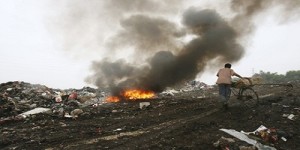
“We only have one extruder running today,” Hu tells us. “In here.” We walk into a brighter room, roughly 40ft long and perhaps half as wide. It smells of something modern and chemical . In the middle is a long device that runs perhaps half the room’s length. At one end is a worker who pours boxes of shredded plastic flakes into a table-size funnel, where they’re slowly melted. I can see the heat, and the melted plastic fumes, rising into his face. Meanwhile, the plastics drip into a 10ft long pipe, eventually emerging as 15 pencil-thin grey noodles.
At Hu’s factory, conditions are actually better than most factories in Wen’an, or so he claims. Yes, sure, a worker stands above the machine, inhaling the visible fumes that fill the room with a chemical choke. But according to Hu, the company has taken some tangible steps to improve the situation. “We used to pay the guy on the extruder more. But that was before we improved the ventilation.” He nodded at the open bay doors and the open windows above the shop. Now the worker earns the same as the poor wretches who wash shredded plastics in chemicals without the benefit of gloves.
Hu invites us back to his office and offers a seat at a large wooden worktable. Behind us, his wife is working, and his son is playing computer games on a PC. Hu, too, has memories of Wen’an before the plastics. He grew up in Beijing, but because his mother was from Wen’an he often visited her family as a child. “I loved coming here,” he says. “The earth itself was so fragrant. You could drink directly from the streams, and there were plenty of fish.” He shakes his head with a sad smile.
“What about the health effects of plastics recycling?” I ask.
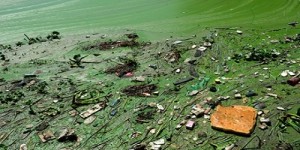
Hu shakes his head. “You can’t say precisely what the health effects are. But if you take a kid from a healthy environment and one from an environment filled with trash, the latter will be the one with problems.”
As I glance at his son, Hu adds that high blood pressure and other “blood diseases” are common in the area. But the biggest problem is the stress related to living in a “dirty, stinky, noisy environment. It takes a physical and mental toll.” He reaches for my digital camera and holds it in his palm. “Is there a place to process and treat this when you’re done with it? There’s a law, sure. But if you ask somebody where to do it – no.”
I’m not sure what, exactly, he’s getting at. Perhaps he’s suggesting that the pollution that’s obvious all around us isn’t really his fault. No doubt, a lack of government regulation played a role in the uncontrolled, unsafe expansion of Wen’an’s recycling industry. But the decision to pollute and ignore the safety of workers, ultimately rests with people like Hu. I glance at the Rolex on his wrist and the PC on which his son is playing video games. For the price of either, he could buy respirators to keep his employees safe from the plastic fumes that they’re now inhaling.
Before leaving Wen’an, my travelling companion wanted to speak to a doctor or some other medical professional about the health of Wen’an’s people. So, late in the afternoon we wander into some of Wen’an’s few remaining village-style lanes, in search of a clinic. Our odds aren’t so bad, actually: most small Chinese villages have a nurse or village doctor who can handle the minor medical emergencies of daily life.
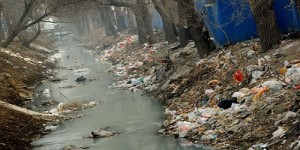
Soon we come across a colourful tiled gate, and just beyond it, a pleasant courtyard. We stroll inside and, spotting an open door at the far end of the space, wander into a small office where a pudgy, solidly built late-middle-aged man is seated at his desk in flannel shorts, a grey polo shirt, and sandals with black socks.
The doctor looks up at us with surprise: foreign faces aren’t common in these lanes, much less at his clinic. We have to talk fast, and Josh places him at ease by explaining that he’s an American academic, a professor, somebody of repute. At that, the doctor, who obviously considers himself a person of erudition, bucks up and tells us that he’s 60 years old, and has been serving this village since 1968. When he started, he explains, he and his colleagues were trained to treat the simple ailments of daily life; advanced diagnoses, much less treatments, were never expected of them. “In the 60s, 70s, and early 80s,” he says, “most of the diseases around here were related to stomach problems, diarrhoea, things related to diet and the water.”
The poverty-related ailments disappeared just as soon as the county could afford to dig for deeper, better wells not contaminated by human and animal waste. Progress, however, has a price. Those wells, he reminds us, were paid for by the plastic waste trade just up the street. “Since the 80s, high blood pressure has exploded,” he explains. “In the past nobody had it. Now 40% of the adults in this village have it. Back in the 80s, you’d only see it in people in their 40s. In the 90s, we started seeing it in people over 30. Now we’re seeing it in people age 28 and up. And it comes with pulmonary problems that restrict movement. People have it in their 30s so badly that they can’t move anymore. They’re paralysed.”
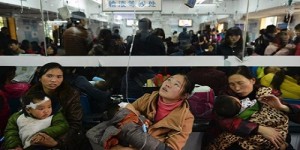
In the weeks following this visit I call a friend, a medical doctor, who tells me that the symptoms and the environment suggest that young villagers are developing pulmonary fibrosis and paralysing strokes. “Back in the 70s and 80s, you didn’t die from high blood pressure,” the village doctor adds. “Now you die from it. I’m 60 years old, and when I was a kid, I remember maybe one person who was so sick with it that he couldn’t get out of bed [a likely stroke victim]. Now there are hundreds of people like that.”
“What’s the cause?” I ask.
He shrugs. “Pollution. It’s 100% pollution.”
“Was it worth it?” I ask. “Was the cost to the environment and people’s health worth the development of Wen’an?” He shakes his head. “Health was better in the past. You knew what was wrong. But the sicknesses now, they’ll kill you.” He smiles at us. “Even I don’t feel good. After you leave, I plan to go to the hospital, too.”
This is an extract from Junkyard Planet: Travels in the Billion-Dollar Trash Trade by Adam Minter, available from Bloomsbury Press, £18.99. Interested in finding out more about how you can live better? Take a look at this month’s Live Better Challenge here.



